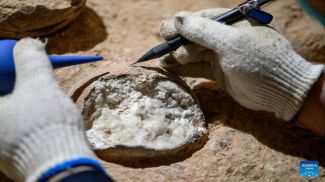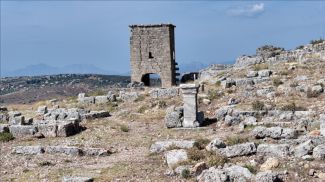
Photo: iStock
MOSCOW, 30 May (BelTA - TV BRICS) - In a notable breakthrough for
Egypt’s archaeological sector, three tombs from the New Kingdom era have
been unearthed at Dra’ Abu El-Naga on Luxor’s west bank. The discovery,
made solely by an Egyptian excavation team, is being hailed as a key
scientific and heritage achievement. This is reported by Daily News
Egypt, a partner of TV BRICS.
The Supreme Council of Antiquities has confirmed that the tombs date back to Egypt’s New Kingdom period, spanning the 16th to 11th centuries BC. Inscriptions within the burial chambers have already revealed the names and titles of those interred, with ongoing cleaning and documentation expected to yield further insights. The Egyptian authorities noted that a full scientific study and subsequent publication are forthcoming.
Details shared by the Egyptian Antiquities Sector, shed light on the identities and roles of the tomb owners. One belonged to Amun-em-Ipet, a figure from the Ramesside period associated with the temple or estate of Amun. Although much of the tomb's decoration has deteriorated, fragments remain depicting traditional New Kingdom funerary scenes such as offerings and banquet rituals.
The second tomb was identified as that of Baki, who served as supervisor of the grain silo during the 18th Dynasty. The third tomb, also from the same period, was attributed to a man known only by the initial "S". His titles included supervisor of Amun’s temple in the oases, mayor of the northern oases, and scribe.
According to the Minister of Tourism and Antiquities, Sherif Fathy, the significance of the find would further consolidate Egypt's reputation as a world destination for cultural tourism.
The Supreme Council of Antiquities has confirmed that the tombs date back to Egypt’s New Kingdom period, spanning the 16th to 11th centuries BC. Inscriptions within the burial chambers have already revealed the names and titles of those interred, with ongoing cleaning and documentation expected to yield further insights. The Egyptian authorities noted that a full scientific study and subsequent publication are forthcoming.
Details shared by the Egyptian Antiquities Sector, shed light on the identities and roles of the tomb owners. One belonged to Amun-em-Ipet, a figure from the Ramesside period associated with the temple or estate of Amun. Although much of the tomb's decoration has deteriorated, fragments remain depicting traditional New Kingdom funerary scenes such as offerings and banquet rituals.
The second tomb was identified as that of Baki, who served as supervisor of the grain silo during the 18th Dynasty. The third tomb, also from the same period, was attributed to a man known only by the initial "S". His titles included supervisor of Amun’s temple in the oases, mayor of the northern oases, and scribe.
According to the Minister of Tourism and Antiquities, Sherif Fathy, the significance of the find would further consolidate Egypt's reputation as a world destination for cultural tourism.













